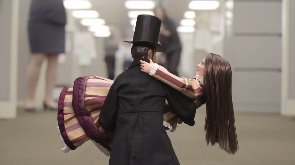Imitation Vs Innovation
Innovation and imitation lie on opposite sides of the creative spectrum in web design careers. Businesses often allow their competitors to introduce new ideas for promoting a brand, although this strategy has several drawbacks.
The first creative entity to use a particular idea typically enjoys the greatest success, since consumers view the latecomers as imitators. For example, Web Hosting Geeks reports that Apple retains the majority of the eBook-reader market while its competitors struggle to obtain 10 percent of the market share. Another problem with imitation in web design is that it can raise copyright issues.
Innovation
Innovation in web design allows you to define your brand so that it causes customers to think of your business before your competitors. It also shows that you're competent and worthy of your customer's trust in your capabilities. Consumers often believe that a brand consists of a few elements such as a logo, slogan and tagline, although branding is considerably more complicated than this.
A brand establishes a corporate image and is the fundamental concepts behind everything the company does. It should reflect the goals and values of the company and deliver that message consistently to show what the company stands for. Consumers most often think of a brand is a product, although it can also be an organization or service.
Web designers can't make a brand, but they can influence the way in which consumers perceive a brand. For example, Apple has a strong brand characterized by its support for humanitarian causes and community involvement. Its advertising and innovative products reflect Apple's corporate culture and cause consumers to feel a connection with that culture. This emotional connection creates Apple's brand, rather than the products themselves.
Imitation
Imitation in web design causes many people to believe that web content is free for the taking. However, the 1976 Copyright Law makes it clear that using images that you find on a website without permission of the copyright owner is a violation of US copyright laws. This generally means that you must obtain written permission before you can copy, distribute, print or otherwise use any copyrighted image. The maximum possible fine for a copyright violation can be up to $250,000 in addition to attorney's fees and damages.
Each violation can incur a separate fine, which can make copyright issues extremely expensive. One such case occurred a few years ago when the head the creative services department in a large corporation distributed products from a smaller company within the same industry. He instructed his staff to imitate the product, which resulted in a multimillion dollar lawsuit from the original product's manufacturer.
Web designers routinely copyright laws by including sound files, software and images on the website without the owner's permission. These cases are prosecuted, daily, although they only comprise a small percentage of the total number of copyright violations. Some cases of copyright violation also involve employees, who were only following their manager's orders to imitate copyrighted material.
Contact us today to learn more about imitation vs innovation in web design.
Emmet M is a freelance writer available on WriterAccess, a marketplace where clients and expert writers connect for assignments.
___________________________________
Artisan Talent is a Digital, Marketing and Creative Staffing Firm placing talent in jobs perfectly matched with their skills all over the US. For available jobs, to submit your resume, or learn more about working with Artisan Talent, contact us here.
Connect with Us
Linked In| Glassdoor| Facebook | Twitter | Instagram | Pinterest


